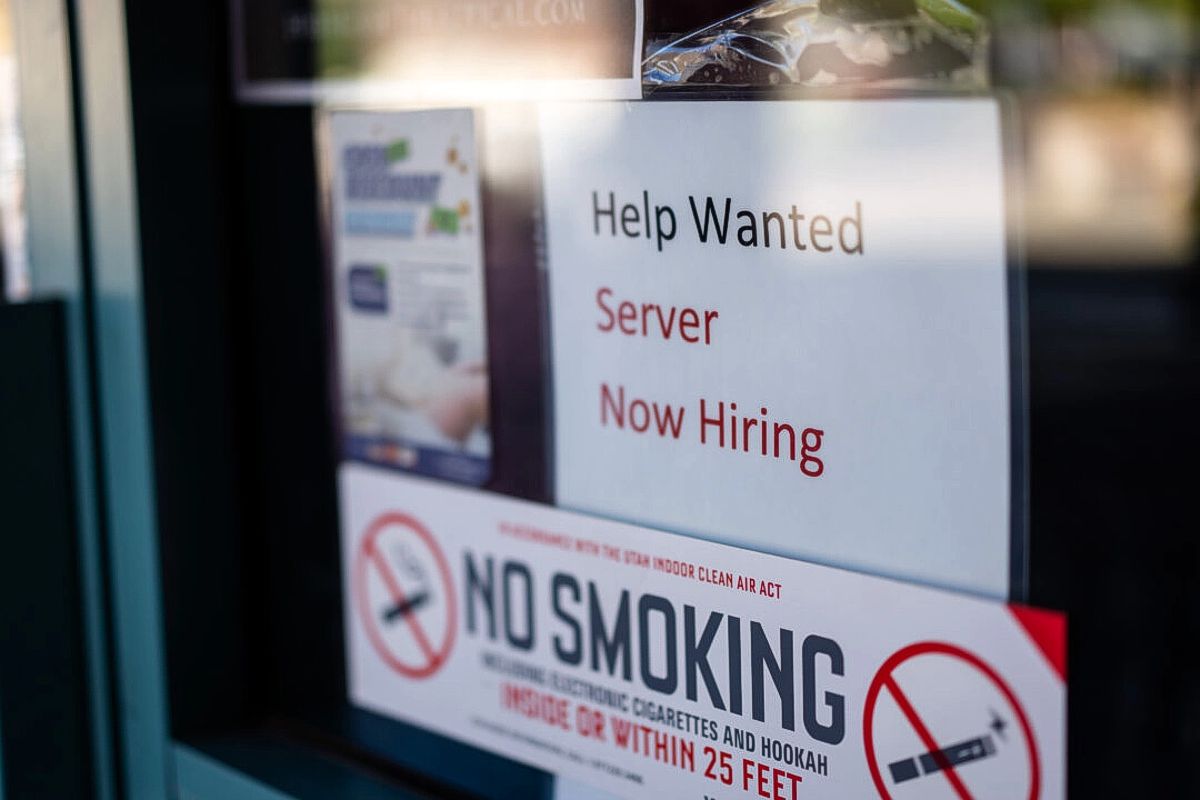Continuing claims remain above 1.9 million for six straight months.
The number of Americans filing for unemployment benefits unexpectedly declined for the third consecutive week to a seven-month low, according to Department of Labor data released on Nov. 26.
For the week ending Nov. 22, initial jobless claims fell by 6,000 to 216,000—the lowest level since mid-April—from the previous week’s reading of 222,000.
The market consensus indicated a reading of 225,000.
New claims data might be surprising, as scores of companies, such as Amazon, HP, and Verizon, have announced layoffs in the past several weeks.
The four-week average, which strips out week-to-week volatility, slipped to 223,750 from an upwardly revised 224,750 in the previous week.
Federal worker jobless claims fell by nearly 4,000 from the previous week, coming in at 1,724, reflecting the end of the U.S. government shutdown. Economists are closely watching this figure to assess whether the Trump administration’s policies and the Department of Government Efficiency’s measures have had a significant impact on government payrolls.
Continuing jobless claims—the number of unemployed individuals currently receiving benefits—rose by 7,000 to 1.96 million.
This metric has remained above 1.9 million since the middle of May, highlighting the challenges out-of-work individuals are having in finding new employment.
Navigating the Labor Market
Recent data suggest employment conditions are mixed, with the nonfarm payrolls report confirming 119,000 new jobs in September. However, payroll processor ADP reported that private businesses eliminated an average of 13,500 jobs per week in the past four weeks.
Due to the government shutdown, the October jobs report has been canceled, and the November employment data will not be released until late December.
Regardless of trends in the numbers, consumers are also recording growing consternation surrounding the labor market.
The Conference Board’s November Consumer Confidence Index revealed diminishing confidence in current and future jobs, income, and financial institutions.
“The labor market differential—the share of consumers who say jobs are ‘plentiful’ minus the share saying ‘hard to get’—dipped again in November after a brief respite in October from its year-to-date decline,” said Dana Peterson, chief economist at The Conference Board.
But Joe Lavorgna, counselor to Treasury Secretary Scott Bessent, is “very confident” that stalling employment conditions will reverse next year.
“If our forecast is right and we’re very confident in ‘26, the labor market is going to turn for everybody, especially the new graduates,” Lavorgna told CNBC’s “Closing Bell Overtime” on Nov. 25.
New Bureau of Labor Statistics data show that 9.7 percent of bachelor’s degree holders aged 20 to 24 were unemployed in September, up from 6.8 percent in the previous year.
With concerns about artificial intelligence running rampant across the national labor market, researchers have questioned the economic and professional advantages of holding a college degree.
By Andrew Moran








